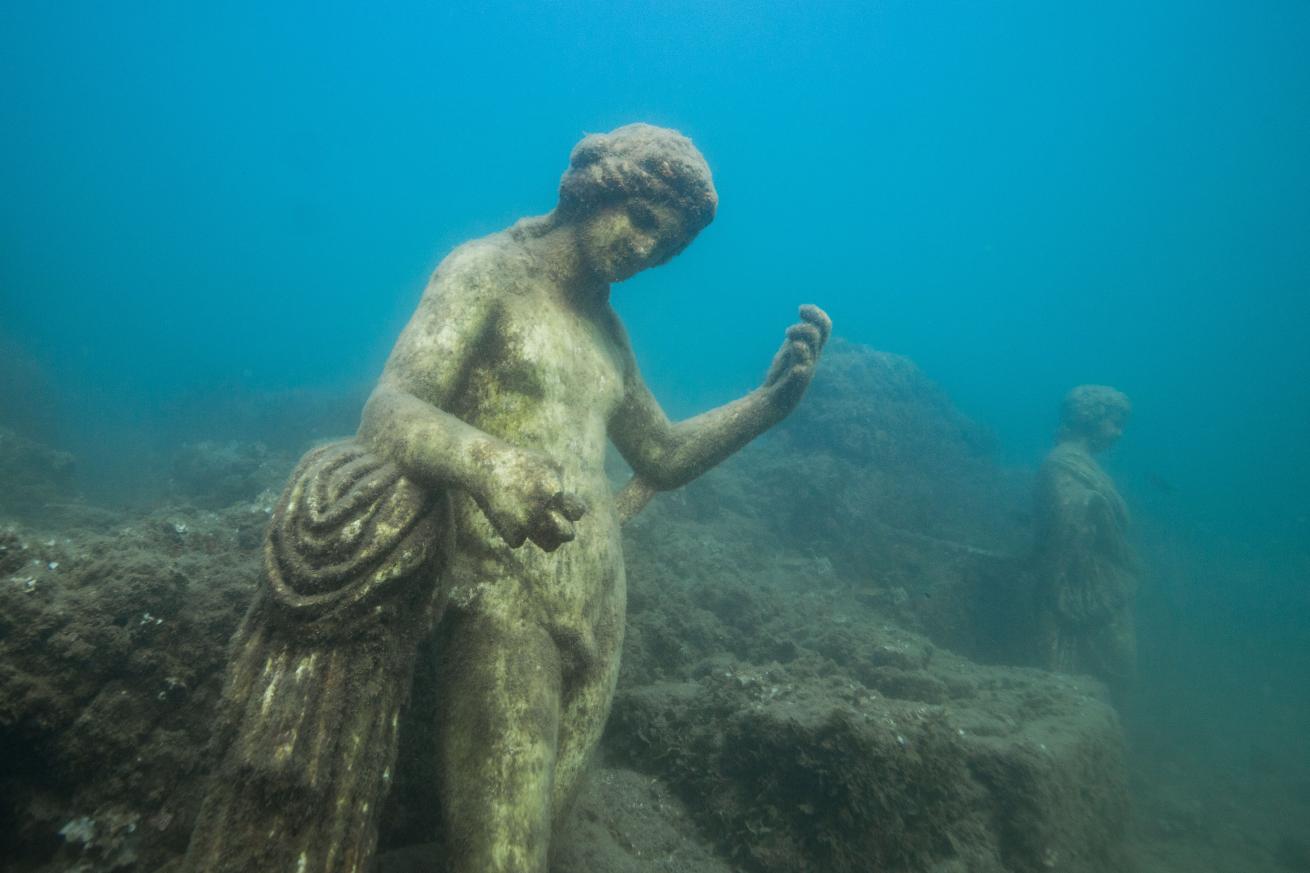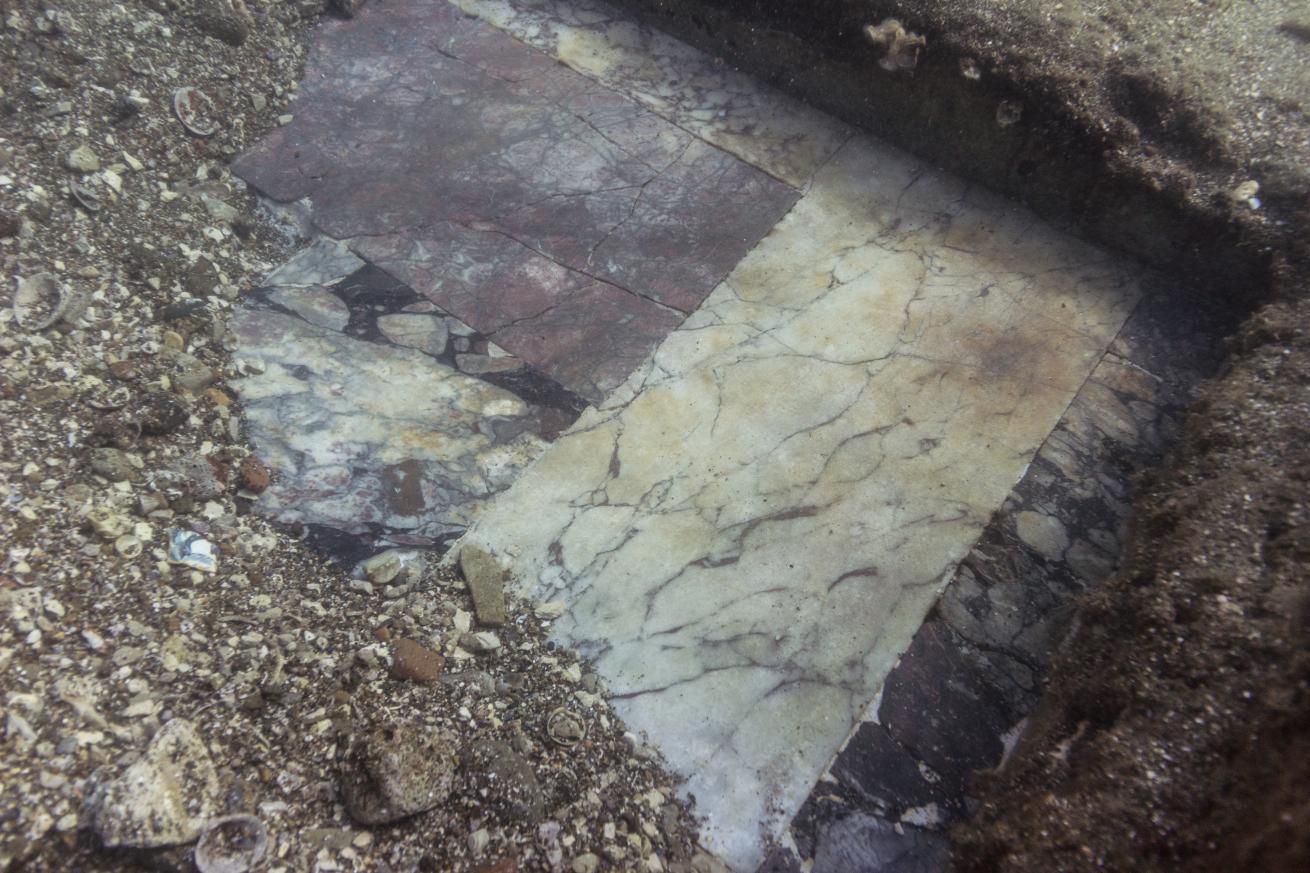Scuba Diving Italy’s Sunken City of Baia

Alisha PostmaOne of the nymphaeum’s recreated statues set amid the blissful blue of the Mediterranean.
Some places dazzle thanks to incredible natural landscapes. Some are doused with iconic art. And some places have so much history it’s mind-boggling. When diving Italy’s sunken city of Baia, nestled amid the Gulf of Naples, you’ll find all three.
As a closet history junkie, diving the submerged city of Baia was at the top of my to-do list when my husband Joey and I visited Naples pre-pandemic. West of Naples, it was built over a volcanically active region dotted with networks of craters and hydrothermal features known today as the Phlegraean Fields.
Geology and politics conspired to sink the city. During the Roman Ages, Baia was a vacation city for the capital's rich and powerful drawn to its natural volcanic vents and medicinal hot springs. The luxurious town was abandoned in the 8th century after it was raided by a Muslim army and, in the 16th century, the underlying volcanic magma chamber emptied — a process known as bradyseism. The land dropped about 20 feet below sea level, drowning more than half of Baia beneath shallow bay waters.
Today, this partially-submerged Roman city is part of the Parco Archeologico Sommerso di Baia, one of the world’s few underwater archeological parks. Its expanse is estimated to be three times the size of the world renown Pompeii.
A City Submerged
Casting off in a small inflatable boat, our group raced north across the sparkling Gulf of Naples towards Punta Epitaffio, a cliff overlooking the submerged city. Reaching the surface of the Parco Archeologico Sommerso di Baia, we splashed into the site known as Claudio's Nymphaeum.
We began finning down “Herculanea,” the main street and the thermal bath complex. The underwater road, which at one point led to Portus Julius, stretched roughly 650 feet in front of us. A medley of crumbled bath ruins practically indiscernible beneath the carpet of marine flora and fauna joined the remnant street. I let my imagination run wild as I tried to envision the kinds of scandals that might have occurred in the exact spot through which we were now swimming.
Following the low-lying brickwork of these once magnificent bath structures, the site opened up into a square thought by experts to be a nymphaeum — a monument to a spring believed to house local nymphs — where Emperor Claudius used to relax. Anchored to the sediment around the nymphaeum, I got my first glimpse of the collection of delicately crafted roman sculptures, a perfect reconstruction of the authentic marble ones excavated from the same location. (The original art pieces were moved to the archeological museum of the Castle of Baia for preservation.) In looking at the weathered replicas, each played host to a dizzying amount of marine life. Sponges, bacteria and bivalves all clung to these figures leaving no inch unpopulated.
Wrapping up our visit, we ended our dive a small stone's throw from the nymphaeum over a seemingly empty patch of white sand. With great care, our guide gently fanned away a small section of the sediment to reveal the absolutely stunning geometric tiles of a mosaic floor. I later learned the city’s precious marble floors constitute the largest collection of underwater Roman mosaics in the world.

Alisha PostmaSweeping back the sand to reveal a small section of the tiled floor of Baia.
When the group was finished admiring the floor’s intricate patterns, the guide re-covered the tiles for protection — even during the snippet of time we admired the exposed masterpiece, schools of fish began rubbing their scales against the floor's smooth marble.
Italy has many notable dive sites, but Baia is one that stands out. As a sunken city dating back into antiquity, this archaeological site is a place filled with mystery and wonder. Being a scuba diver, water is my happy place. Pair that with a dose of history and I am left with memories that will last a lifetime.
Need to Know
Licensed operator:
Dive sites:
- Claudio's Nymphaeum
- Villa with Protyrum Entrance
- The Thermal Baths of Lacus
- Pisoni's Villa, Portus Julius
- Pisoni's Villa Pila
- Smoky Reef
Depth: Sites range between 13 and 42 feet.
Conditions: Waters are warmest from July to September, hovering around 75 to 80 degrees F. Temperatures drop to the mid-50s in the winter, bottoming out in February and March.
Equipment: A 3 to 5 mm wetsuit during the warm summer months and a drysuit in winter.










